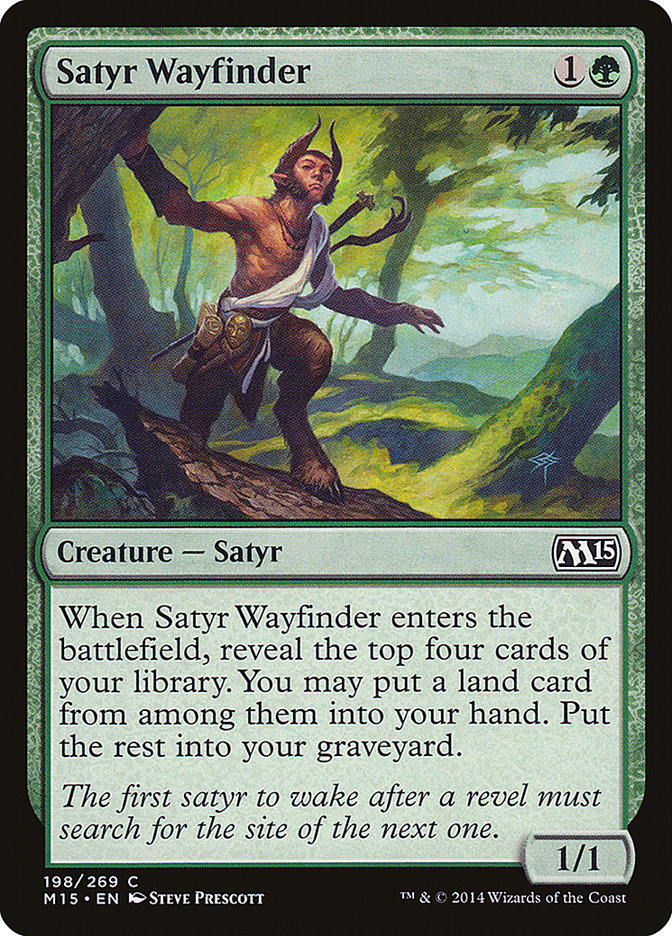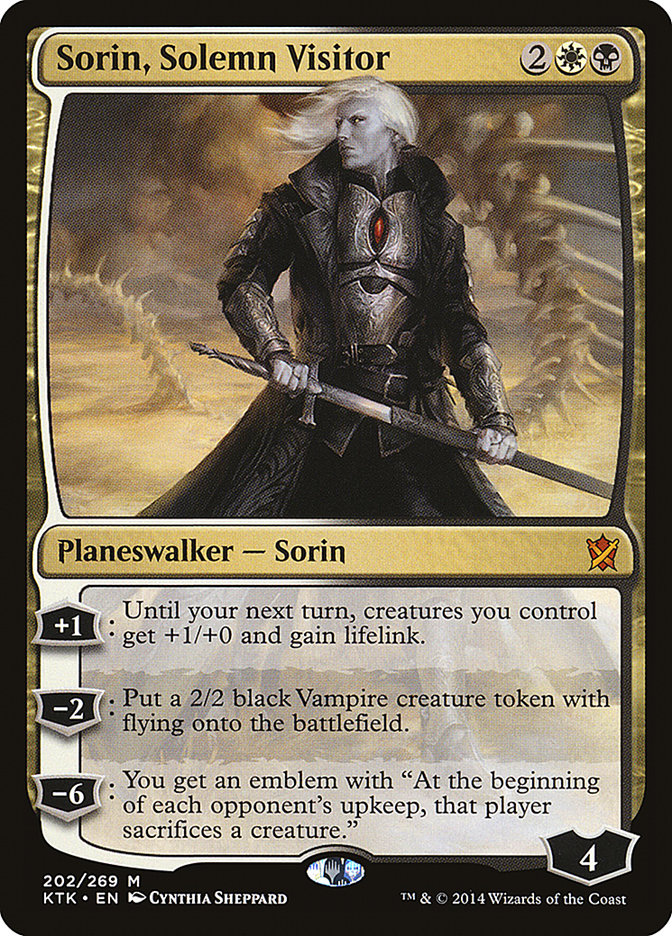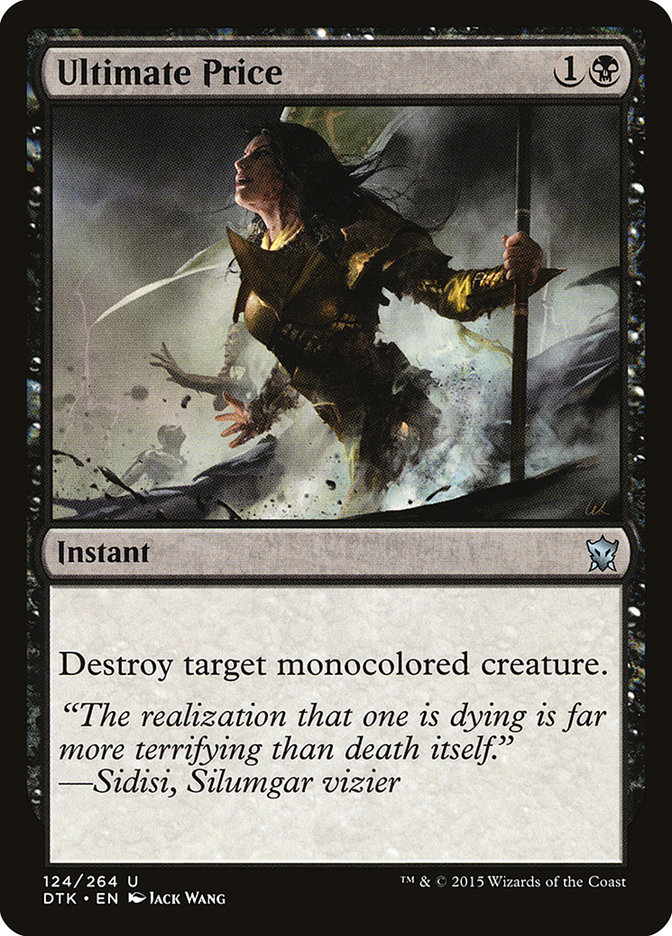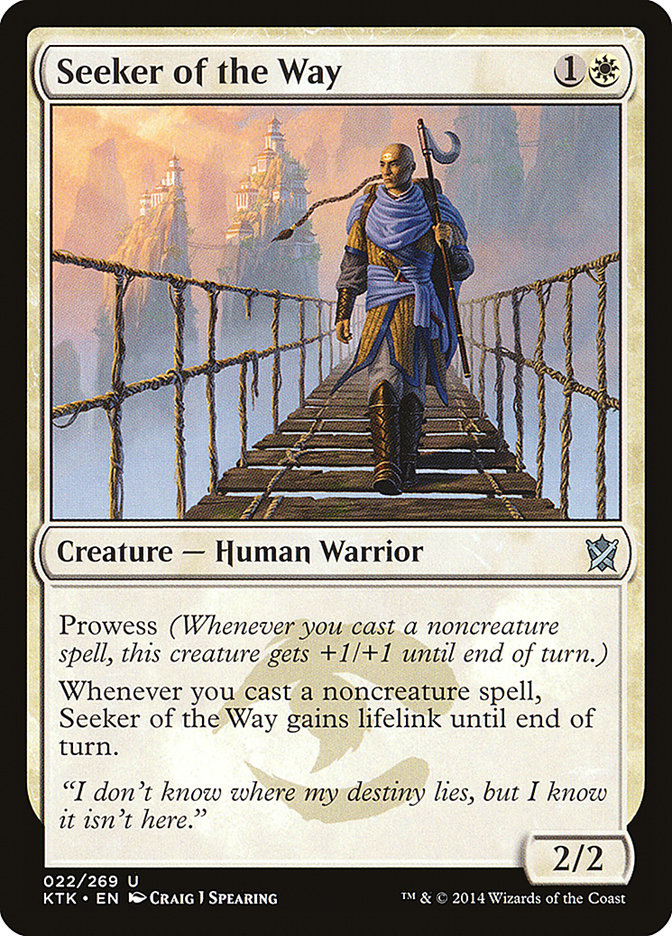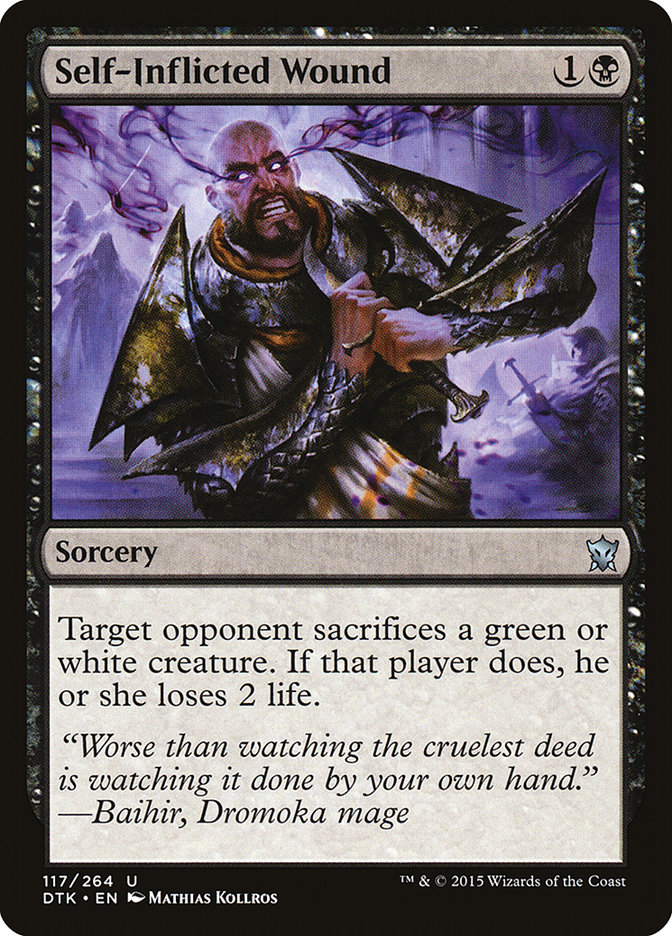Season Two of the Open Series has been an enjoyable one for me, but for very different reasons than Season One was. My Season One win allowed me to relax a
bit, and Season Two has seen me able to take a step back and enjoy some time away from the grind.
I finally got around to writing the Cube primer I’ve been meaning to write for quite a while. I got to enjoy some non-Magic weekends doing various other
things, including my best bud’s bachelor party. I also got to play a little bit of Magic, but on my terms. I got to play my first Grand Prix/major Limited
event in quite a few years at Grand Prix Atlantic City and fell one round short of qualifying for the Pro Tour again. I got to play a relaxing event at SCG
Cleveland where I took Abzan Megamorph to a top 16 finish.
But the time for relaxing is over.
I’ve been itching for some competition, and with the Season Two Invitational coming up in Columbus this weekend, I’ve been gifted just that. Now I just
need to figure out what to play…
The last time I played Standard, I played the Abzan Megamorph deck that was the new hot deck:
Creatures (20)
Lands (26)
Spells (14)

In the weeks that followed, pretty much every deck in the format became a megamorph deck overnight- Den Protector and Deathmist Raptor were everywhere. I
kept up to speed by keeping an eye on coverage and results, but it was time to get back into the trenches.
Last Sunday, Close Encounters Games hosted an Elite IQ in southern Jersey. I wasn’t the only one who needed to practice for the Season Two Invitational, as
my girlfriend Nicole would also be playing in her first Invitational. With the lure of Atlantic City nearby, we decided to make a weekend out of it.
Aside-
I just want to mention how well Close Encounters Games ran this event. It was their first event hosted outside their home store, and everything ran
perfectly. Any and all issues were handled promptly and professionally, and the site was awesome. They even had a bar on site! Nicole and I got to play
some pool while we waited for…
Oops, spoiler alert!
Ah well, might as well spoil the ending:

Nicole and I were paired in the last round of the swiss and able to draw into top 8, with her ending up the 3rd seed at 5-0-2 and me ending up the 5th seed
at 5-1-1. Let’s take a look at how we got there.
Creatures (21)
- 4 Courser of Kruphix
- 4 Satyr Wayfinder
- 4 Siege Rhino
- 1 Tasigur, the Golden Fang
- 4 Den Protector
- 4 Deathmist Raptor
Planeswalkers (3)
Lands (24)
Spells (12)

I played the logical next step from Cleveland’s Abzan Megamorph deck in Abzan Megamorph Control. I played the same maindeck that Mike Sigrist took top a
top 16 finish at the Premier IQ at SCG Worcester, and swapped a few sideboard slots to taste.
The deck is definitely good, but it is also probably the most basic level one deck in the format. It felt like I wasn’t really doing anything special, and
round one I got to play against Chad Kastel playing one of the next level decks in Gerry Thompson’s G/B Megamorph splash Five-Color Dragons deck. Chad’s
deck seemed awesome, and although I was able to come out on top, it definitely impressed me. My deck was excellent at containing the Deathmist Raptor + Den
Protector portion of the deck, but before I was done handling that I had to handle a horde of Dragons backed up with Haven of the Spirit Dragon.
I would mostly cruise through the rest of the tournament, taking a tough loss in round four because I didn’t fully read the card Rally the Ancestors. I
soundly defeated a Mono-Red player, as it felt I had far too many cards for the matchup in my sideboard, along with the usual fare of Abzan Aggro, Mardu
Dragons, and so on.
While much of the maindeck is what is expected, a few cards stand out.
Tasigur, the Golden Fang was absolutely fantastic, and I would be happy if I could squeeze in a second. Delve allows the deck to actually cast more than
one spell in a turn, which makes Tasigur great early as a fairly cheap threat, and late as a card advantage engine. Murderous Cut was also very good, but
unfortunately the diminishing returns on delve cards means it is very hard to have more than two or three. Satyr Wayfinder was the glue holding the delve
cards together, while providing extra synergy with Deathmist Raptor and Den Protector and allowing you to play fewer lands. I only hit Deathmist Raptors
twice off of Satyr Wayfinder in seven rounds played, which I imagine is a bit under expectation, and the Wayfinders were still really good.
Crux of Fate was a very nice answer to have in my deck for some of the deck’s problems. A wrath effect helps us not get run over by decks like Abzan Aggro
or Mono-Red, but it is also very effective against the various Dragon-based decks as almost a pre-sideboarded card. Crux of Fate also gives you a good shot
against the G/R Devotion decks that are creeping back into the picture lately and are not a good matchup.
Sorin, Solemn Visitor continues to disappoint me in Abzan decks, as he just doesn’t do enough at any stage of the game. The life swing isn’t needed against
Mono-Red, and board presence is so much more important in most other matchups where a random 2/2 flier is almost irrelevant.
As I said, there are probably too many cards in the sideboard for Mono-Red, as between maindeck Satyr Wayfinder, Courser of Kruphix, Siege Rhino, Deathmist
Raptors, and Elspeth, Sun’s Champion we already have a lot of tools against them. Arashin Cleric was fantastic, but we can definitely trim them down a bit.
Lastly, Ultimate Price was very important, as Stormbreath Dragon and friends are back up on the rise and you need to be able to answer them. My loss in top
8 was to a Temur Dragons deck, as Stormbreath Dragon is not a very forgiving fellow.
If I had to submit my decklist for the Season Two Invitational right this second, this is likely what I would register. However, I do hope to find
something a bit more interesting in the coming days.
Creatures (21)
- 4 Stormbreath Dragon
- 4 Goblin Rabblemaster
- 4 Seeker of the Way
- 2 Kolaghan, the Storm's Fury
- 3 Soulfire Grand Master
- 4 Thunderbreak Regent
Lands (25)
Spells (14)

I usually build Nicole whatever the most reasonable Siege Rhino deck is, but as I was already playing Abzan, I had to find her another option. It sure was
easy when I was just playing U/W Control every week, which had almost no overlap in cards with the other major decks.
Fortunately, Mardu Dragons is a powerful and proactive deck, and I felt pretty good about her playing it. The deck is a bit schizophrenic at times, as you
end up with some draws that are reminiscent of the old R/W Aggro decks, and some draws where you feel like a Dragon control deck. Regardless, the power
level was there and she was happy with it despite never having played it before.
Obviously she 5-0’d to double draw into top 8.
While she was also dispatched in top 8 by a G/W Collected Company deck, she was very happy with the deck all day.
One of the biggest questions when building Mardu Dragons seems to be if you want to be lower to the ground with Seeker of the Way or not. Seeker of the
Way, in conjunction with Soulfire Grand Master and Goblin Rabblemaster, do a great job of providing early pressure to expend your opponent’s resources so
the Dragons can come and finish them off. So many cards in the deck like Draconic Roar, Crackling Doom, Thunderbreak Regent, and Stormbreath Dragon provide
incidental damage, which means your early creatures don’t really have to do that much damage to make a big impact on the game.
Speaking of incidental damage, I decided to take it a step further by including two Self-Inflicted Wound in the maindeck. I wanted another two-mana removal
spell, as I thought Kolagan’s Command or Murderous Cut were just too clunky, and Self-Inflicted Wound dealing an extra two damage falls right in line with
what the deck wants to do. If you do nothing but play Self-Inflicted Wound, Draconic Roar, and Crackling Doom to kill three creatures, you’ve already done
an astounding seven damage. The only deck in the format that Self-Inflicted Wound is dead against is Mono-Red, as even the control decks rely on Dragonlord
Ojutai as their win condition, and that’s a very worthwhile risk.
The big jig is in the sideboard, as you have the ability to transform into a much more controlling deck when need be. Anger of the Gods is amazing against
low to the ground decks, and also great against Deathmist Raptor and friends. Crux of Fate helps you go all the way against the bigger decks in the format,
while of course, preserving your Dragons.
Full disclosure: the two Duress should probably be Thoughtseizes, but a man only has so many Thoughtseizes. There is some merit to Duress, as it is a good
sideboard card against Mono-Red, whereas Thoughtseize is obviously not.
The Season Two Invitational
Both of these decks are very reasonable choices for the Season Two Invitational in Columbus this weekend, but it’s hard not to think that there will be
some new innovation as it seems like there is every week in Standard. Regardless, the Standard format is pretty reasonable right now.
Modern, on the other hand… jeez.
Somebody help a brother out?



